This Thanksgiving I wanted to fry a turkey. It’s all the rage and I had heard how fantastic the turkey tastes. There are all sorts of warnings and videos about frying turkeys and burning your house down (it’d be seriously fun to be one of these firemen!)
Not only did I not want to light myself, family or house on fire, but I also didn’t want to burn or overcook my turkey. Enter RoastLog.
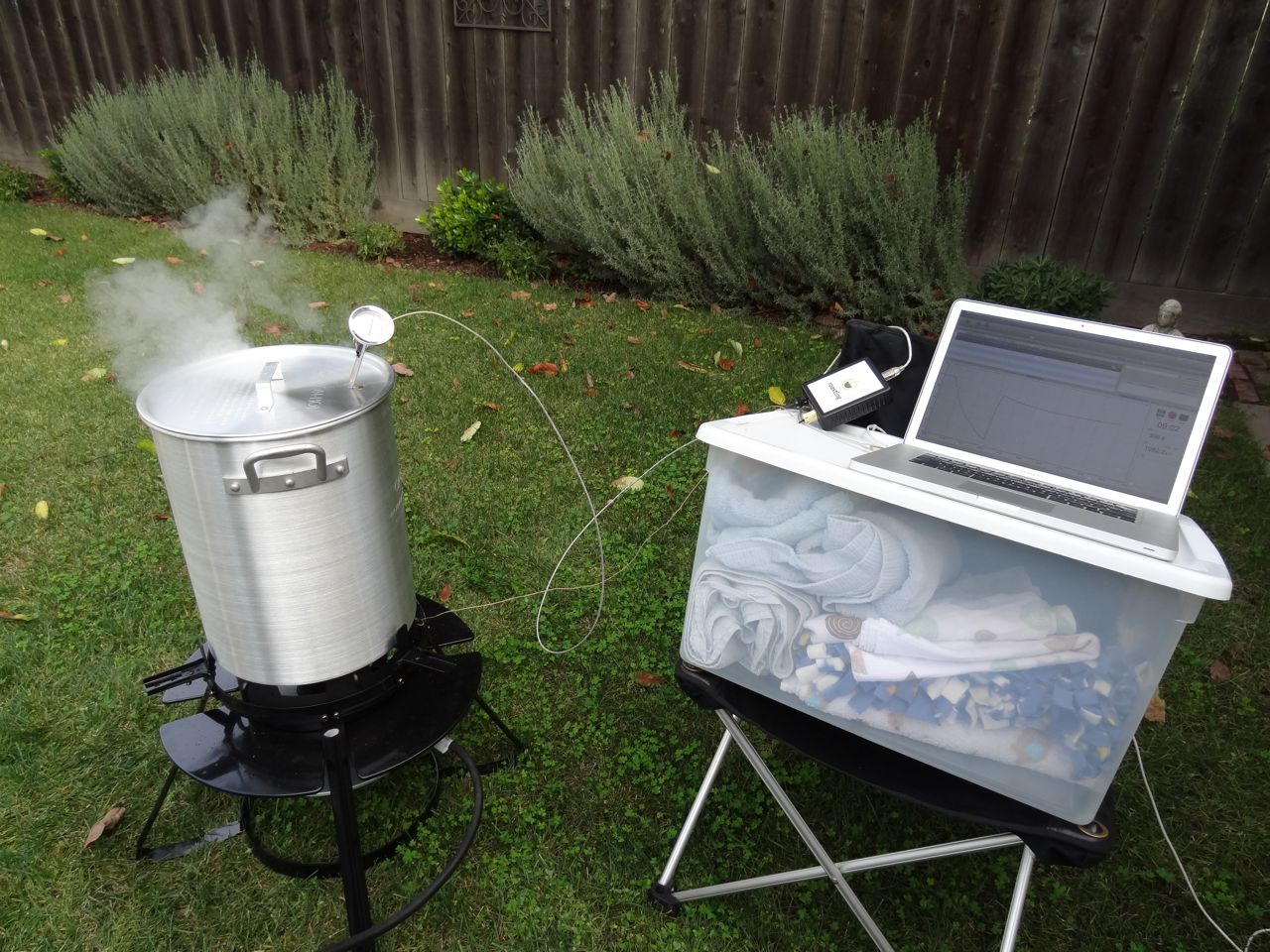
My TurkeyLog setup. Four gallons of 350F peanut oil in the pot on the left, MacBook Pro and RoastLog Data Bridge on the high tech laptop stand on the right.
RoastLog started off its life as a temperature recording system with a little web software to store and interact with that data. Since then, we’ve grown to include a much richer set of features for managing inventory, analyzing green coffee purchase prices and fees, etc. Still, we retain the ability to measure, record and visualize temperature readings in real-time of pretty much anything you can reach with a thermocouple.
I grabbed a type-J thermocouple and drilled the correct size hole in lid of my fryer to measure the oil temp, securing the TC with a small metal binder clip. Since the Data Bridge can measure up to four temperatures, I put a type-k thermocouple at the base of the pot in between the pot and burner. I didn’t know what to expect measuring the burner temp, but thought it’d be fun. With that, I lit the burner and was off.
After about a minute I got a very nice linear warm-up for the oil temperature. As you can see in the screenshot above, the burner TC was reading about 850F. One of the neat features of the updated UI is the ability to selectively turn on/off certain TCs on the plot. It was nice to see the burner temperature, but I didn’t always want it on the plot for scaling reasons.
The warmup phase went well and was thankfully uneventful. Once I got the oil to 350 it was show time. I had my old welding gloves from college and wore those while very slowly lowering the bird into the oil. Putting that sucker in four gallons of 350 degree oil was a bit scary at first. The welding gloves were a late addition since I didn’t know exactly where I had put them, but I was damn happy that I had found ’em.
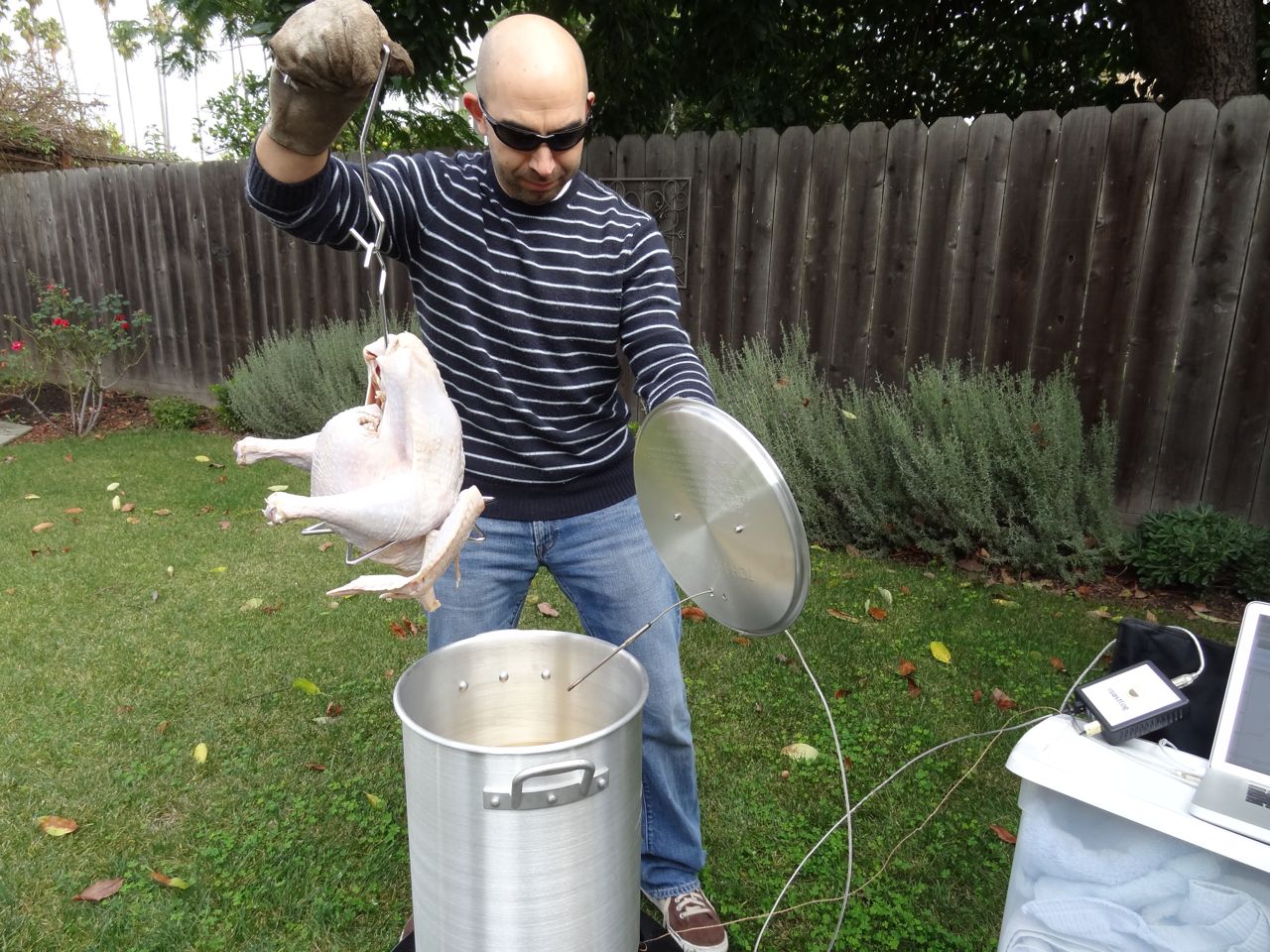
Gently placing the turkey in the oil. Note the thermocouple sticking through the lid, attached to the Data Bridge.
Once the lid was back on the pot and thermocouple in the oil I could see that oil temperature was dropping. Just like coffee roasting, this was the result of putting something cold into something hot. I cranked up the heat of the burner to get back to 350F as quickly as possible. During that phase of my fry the burner temperature got up to about 1100F. It took roughly 2 1/2 minutes to hit the turn-around time where the oil starting increasing in temperature…a bit longer than a typical coffee roast.
Now, here’s the part where RoastLog really helped. Because I had a visual representation of the temperature, I could see when I was getting close to my target of 350F and the rate at which the oil temp was increasing. As I approached 350F, I backed the heat down bit by bit and tried to just touch and then stabilize at 350. Below is the zoomed-in plot from roastlog.com. You can see it for yourself here as well…to zoom in simply click and drag on the chart: http://roastlog.com/roasts/zambrano-coffee/46/
As you can see, I didn’t stray too far from my 350F target. I was continuing just fine through minute 24 when I noticed a slight ramp up in temperature. In terms of degrees, it wasn’t that much above 350, but due to RoastLog I was able to see the trajectory and that it would quickly become an issue if I let it continue. Back down came the burners so low that I actually killed the flame….doh! If you look at the subplot on the website or burner temp (green) below you can actually see a huge drop in burner temperature when the flame was out. It wasn’t that big of an issue really….once the burner was re-lit I got back on track.
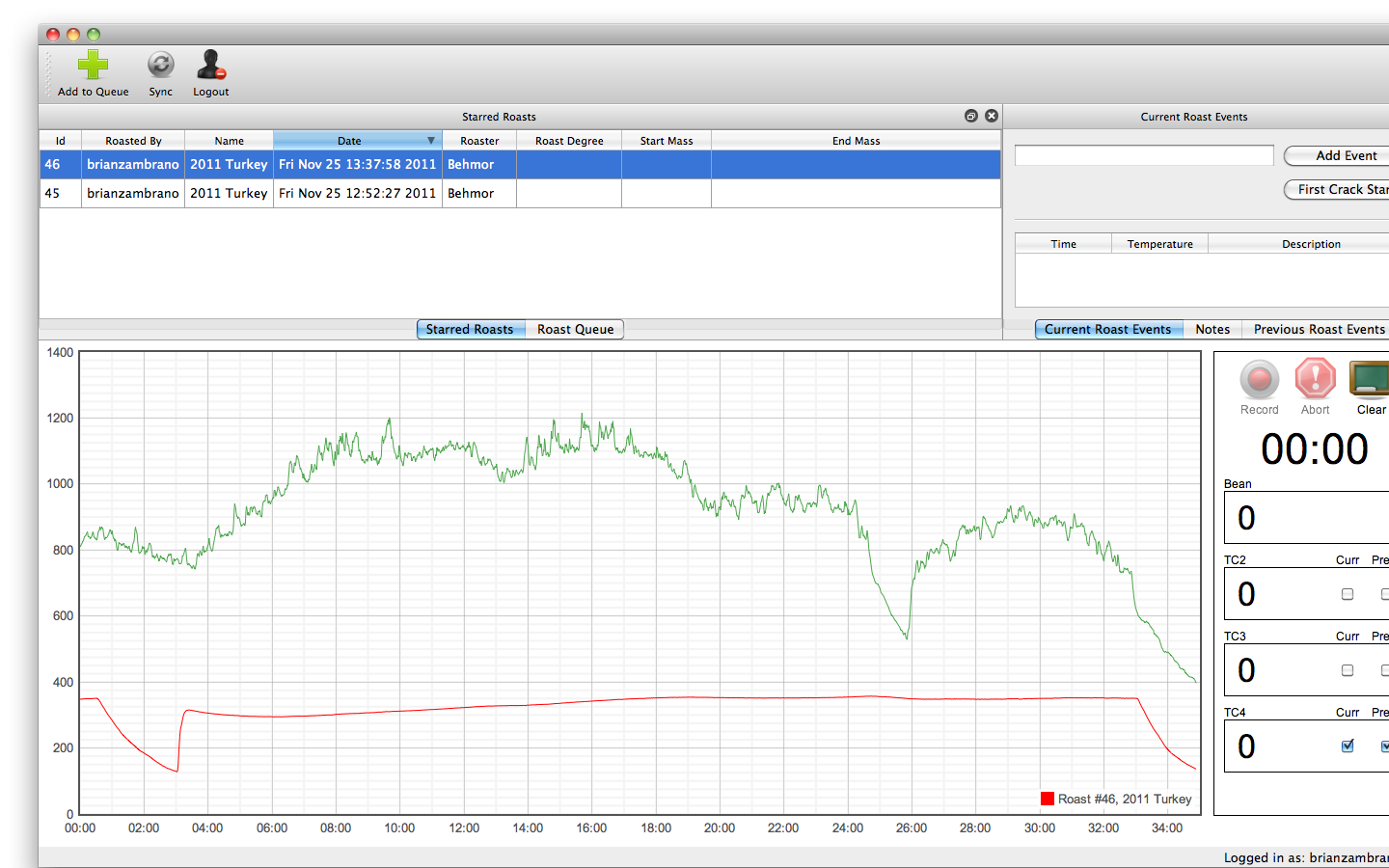
Full recording of oil and burner temperatures. There's a big drop in burner temp when I accidentally killed the flame.
Being able to remove the oil temperature from the plot while recording was great, since the scales were so much different.
The result? Delicious. I didn’t light anyone on fire, had a great time and produced a great tasting turkey for the family. I’m looking forward to doing this again. With a longer thermocouple I think I can actually log the internal temperature of the turkey which would be the ultimate in turkey perfection.
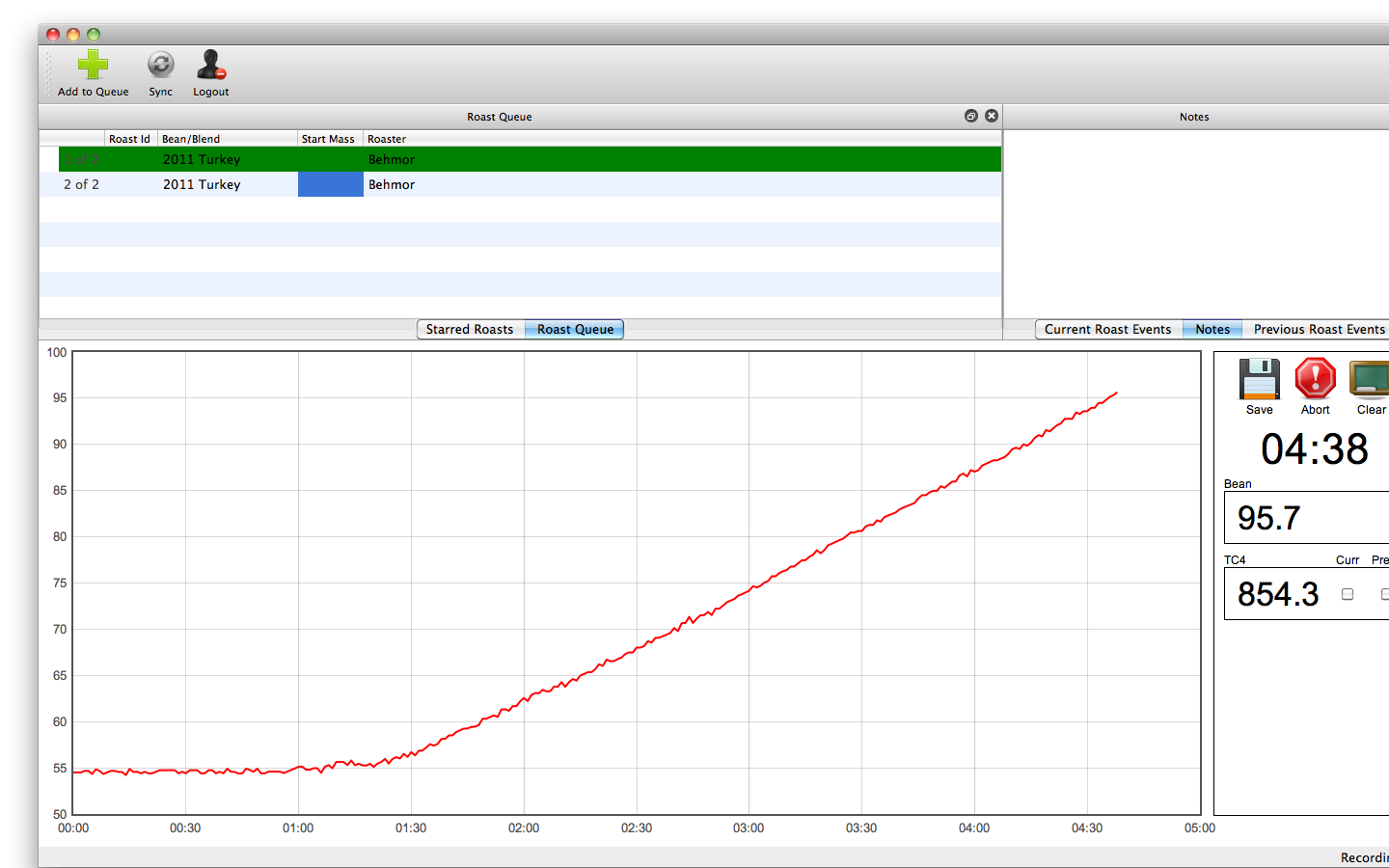
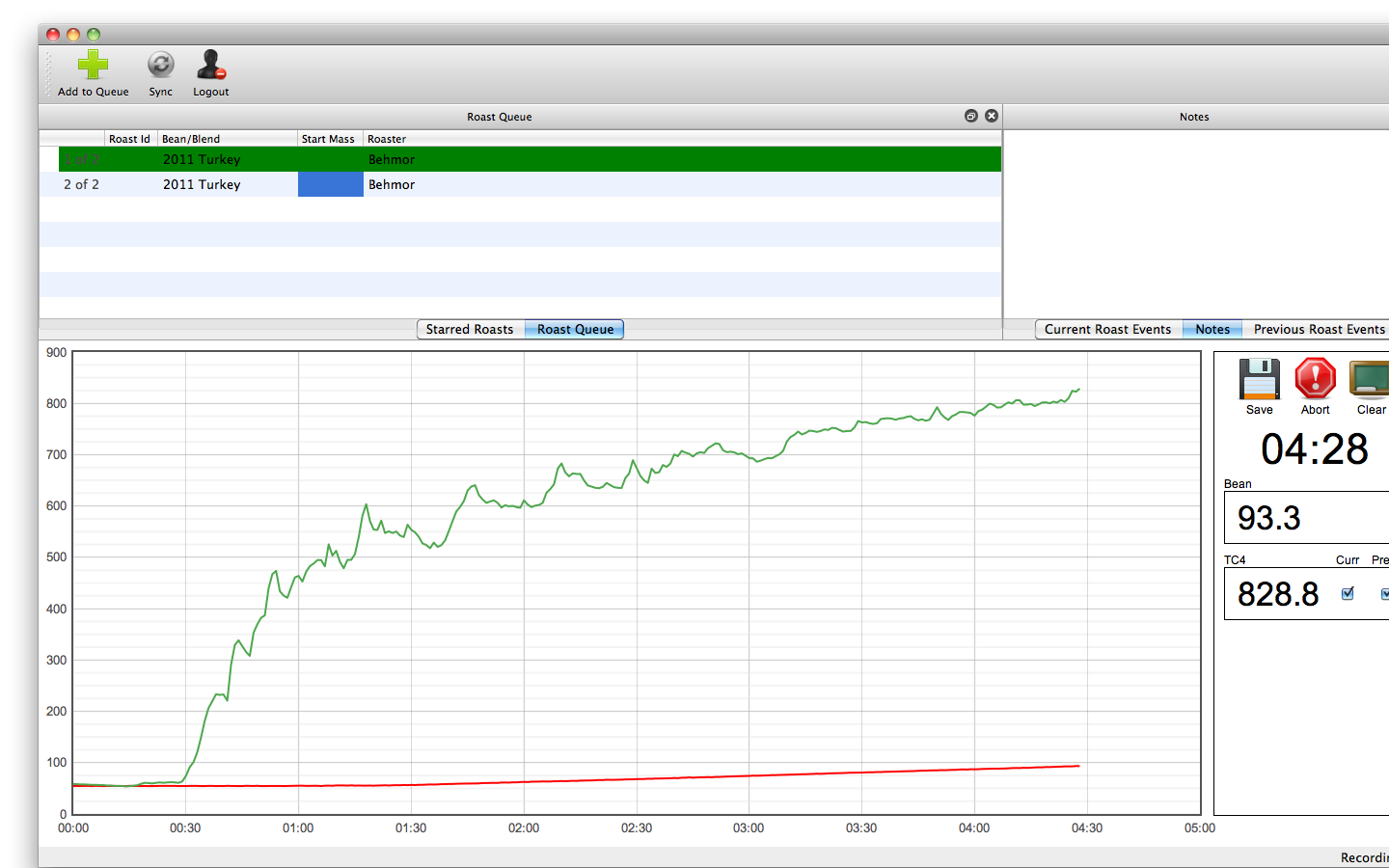
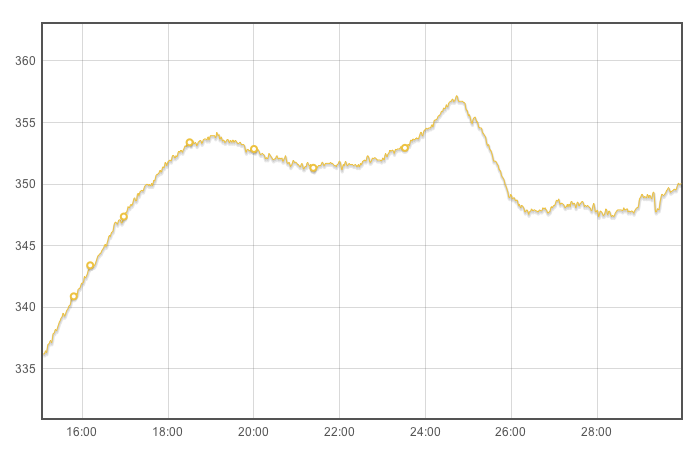
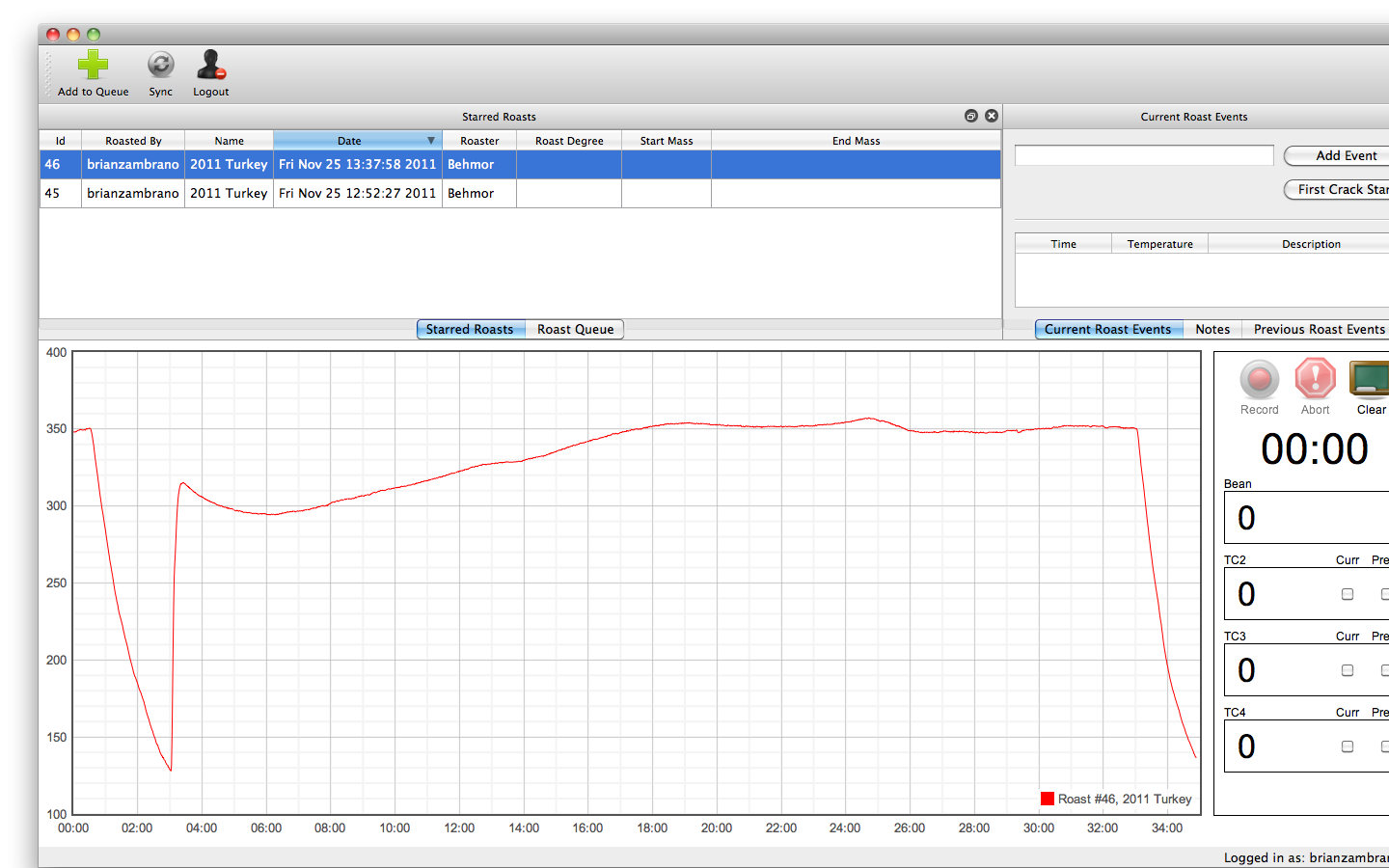
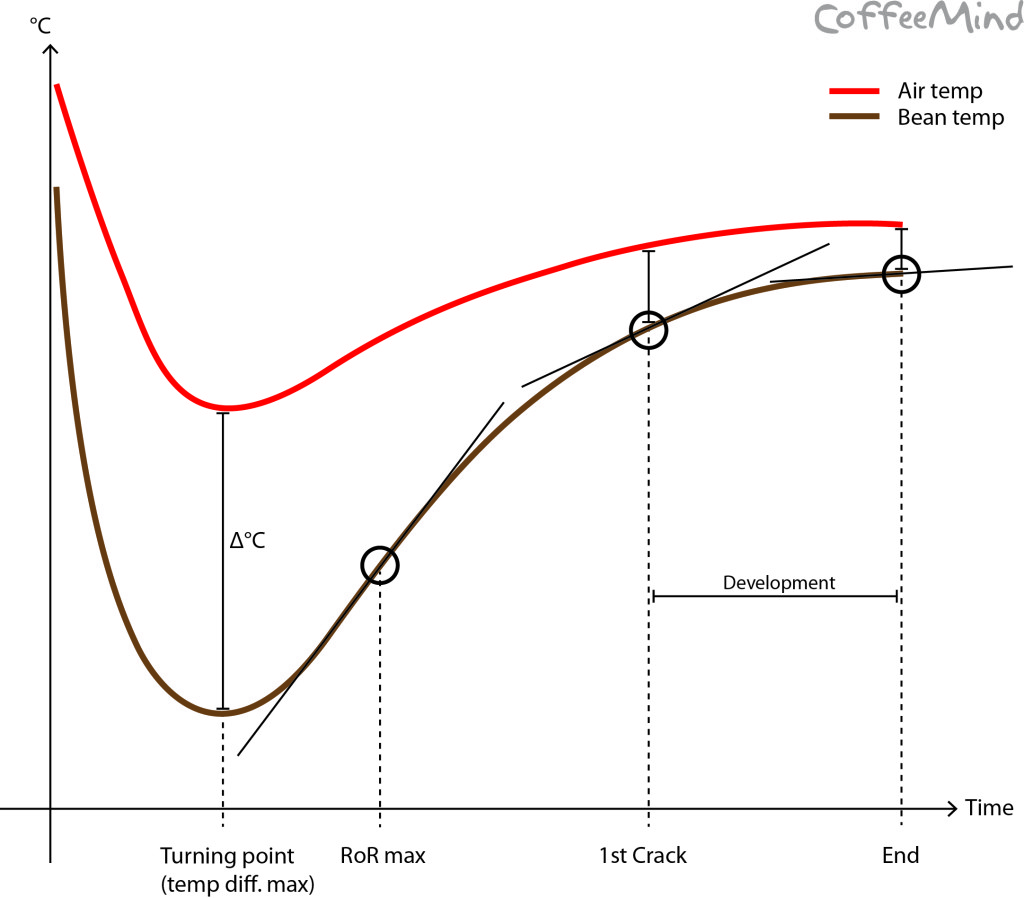
2 Comments
Audrey Crane · November 28, 2011 at 9:27 pm
That’s pretty cool…
Ryan Brown · December 8, 2011 at 7:45 am
And nerdy 😉
Comments are closed.